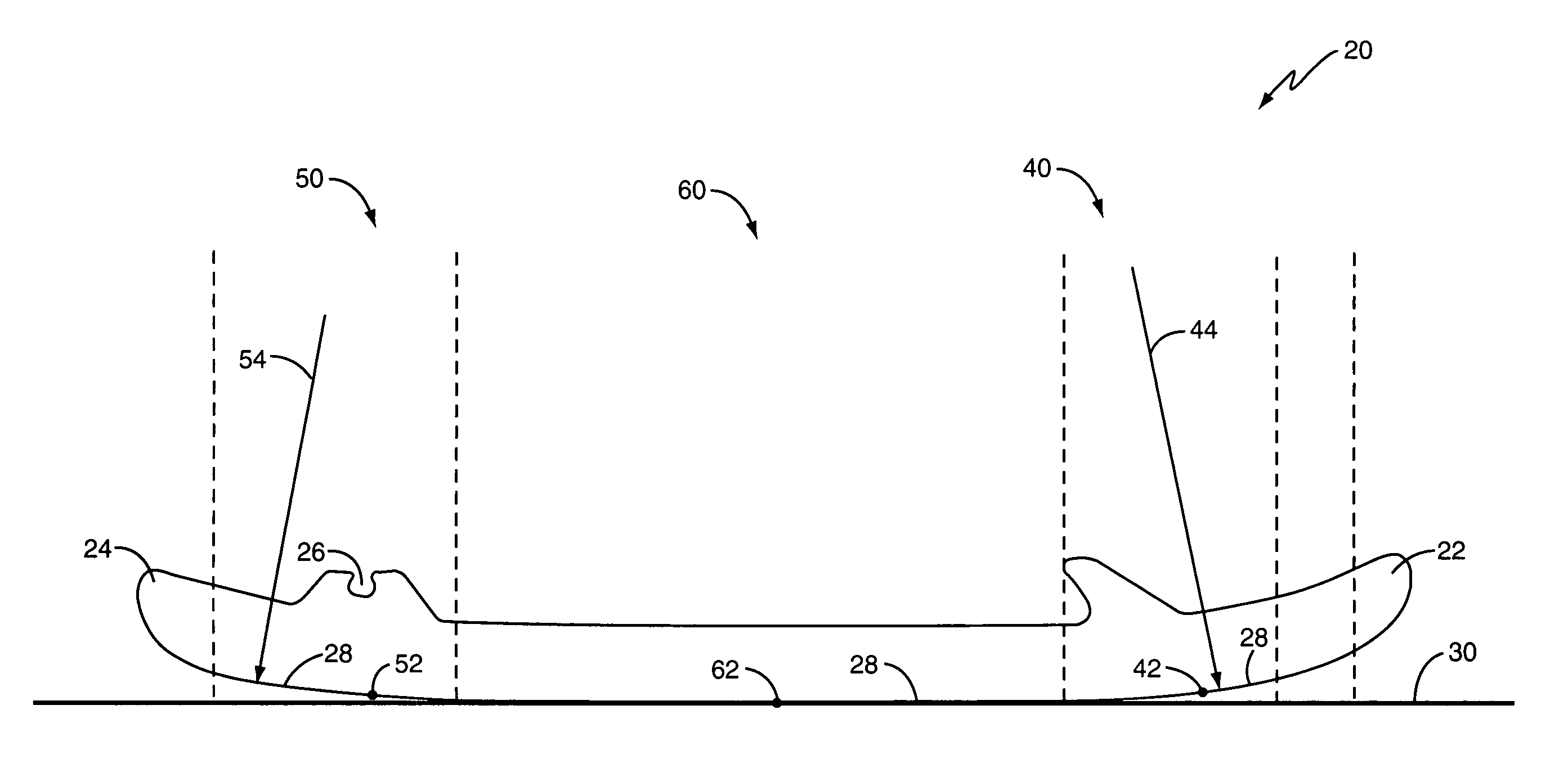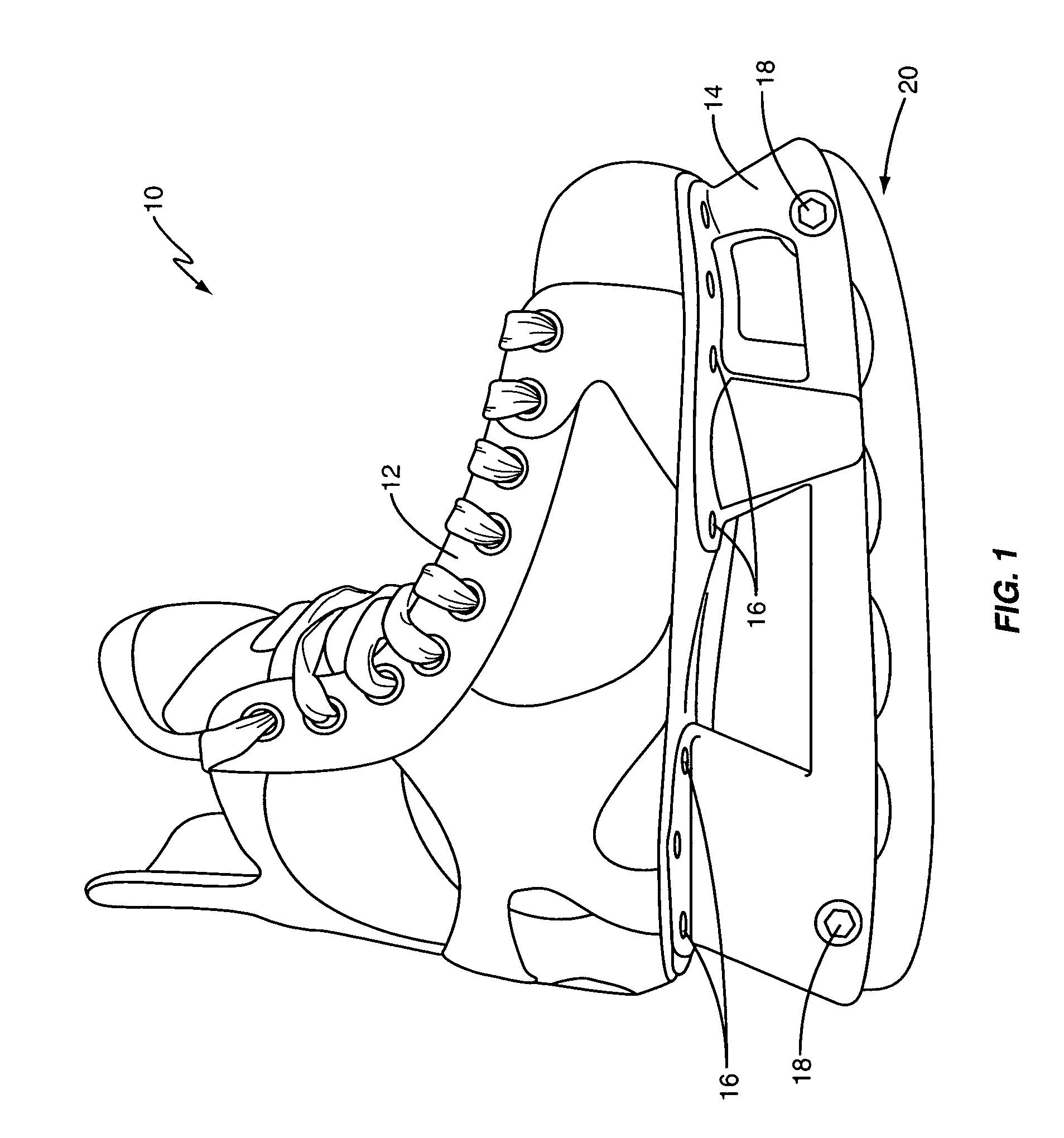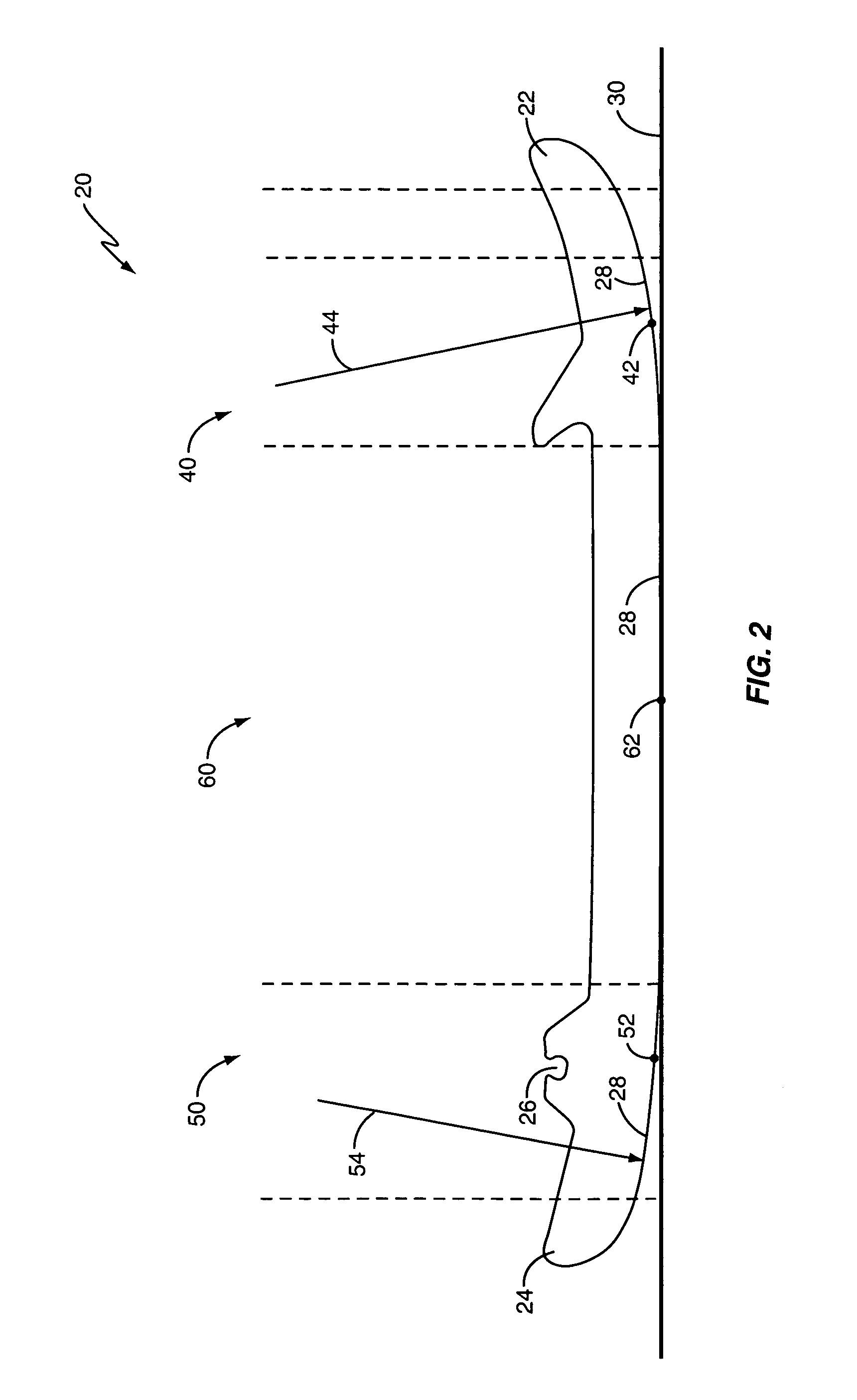Ice skating blade
a blade and ice technology, applied in the field of ice skating blades, can solve the problems of requiring skaters to work harder to maintain balance and control, and achieve the effect of reducing the distance through which skaters “rock” on the blade, and reducing the distance between the front and rear balance points and the ice surfa
- Summary
- Abstract
- Description
- Claims
- Application Information
AI Technical Summary
Benefits of technology
Problems solved by technology
Method used
Image
Examples
Embodiment Construction
[0013]The present invention comprises a blade for ice skates and to a method for forming or shaping the blade. The present invention is particularly useful for hockey skates, which typically have a curved profile. The present invention could also be employed with other types of skates, such as skates for figure skating and speed skating. The present invention is based on the observation that there are three balance points along the bottom edge 28 of the blade, referred to herein as the front balance point 42, the center balance point 62, and the rear balance point 52. The balance points 42, 52, 62 are points on the blade over which the skater's center of gravity lies when the skater performs various movements on an ice surface. The blade according to the present invention is shaped to maintain critical vertical distances between the three balance points 42, 52, 62, and a line that runs tangentially to the center balance point 52. One result is that the front and rear balance points ...
PUM
 Login to View More
Login to View More Abstract
Description
Claims
Application Information
 Login to View More
Login to View More - R&D
- Intellectual Property
- Life Sciences
- Materials
- Tech Scout
- Unparalleled Data Quality
- Higher Quality Content
- 60% Fewer Hallucinations
Browse by: Latest US Patents, China's latest patents, Technical Efficacy Thesaurus, Application Domain, Technology Topic, Popular Technical Reports.
© 2025 PatSnap. All rights reserved.Legal|Privacy policy|Modern Slavery Act Transparency Statement|Sitemap|About US| Contact US: help@patsnap.com



